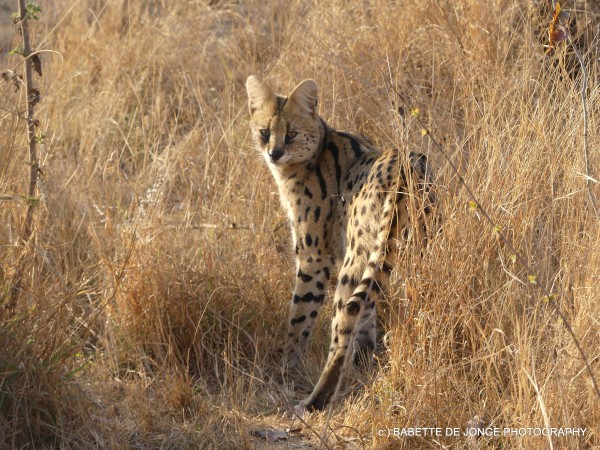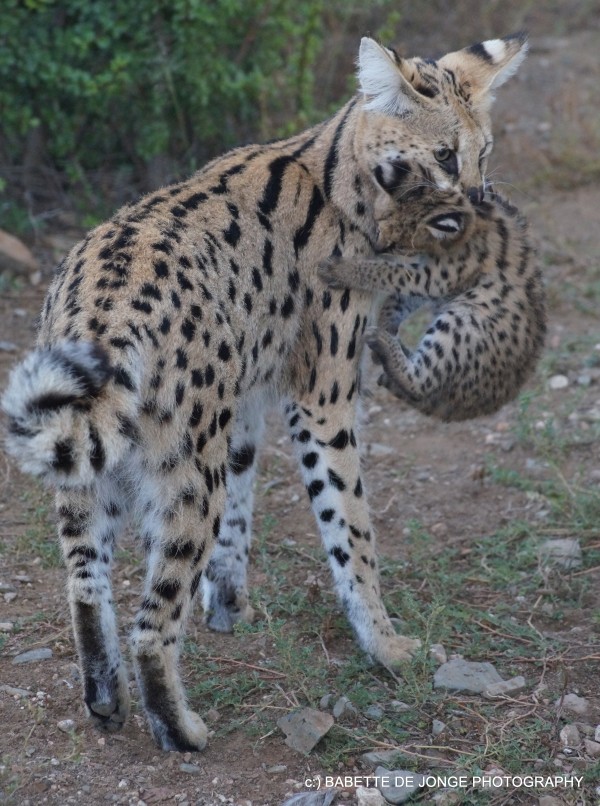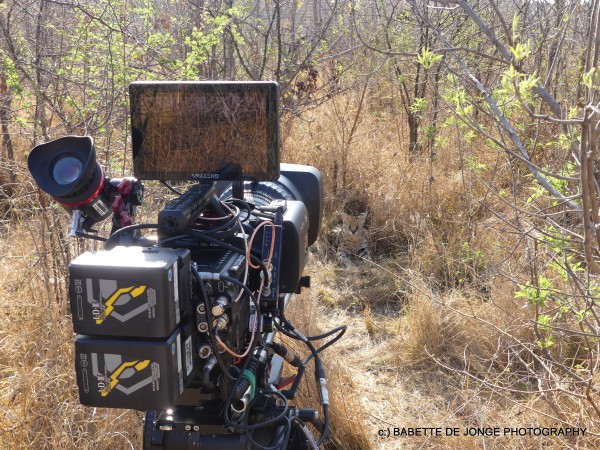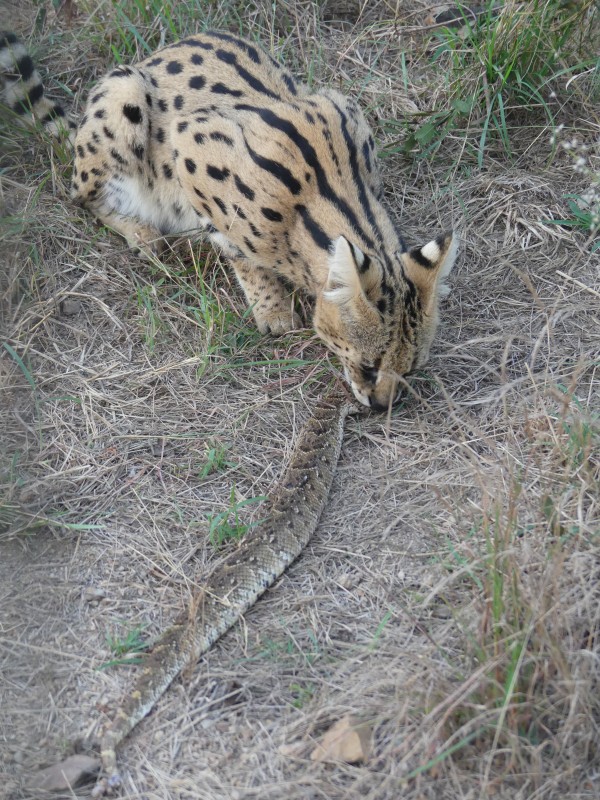There is a lot going on about servals at the moment, and I’m not just talking about our shelter. The most important thing is that the serval is no longer on the positive list (also known as the allowed pet and hobby animal list). Therefore, from 2024, they finally may no longer be kept as a pet in the Netherlands. I personally think this is a good thing, although some people (especially breeders of the Savanna cat) disagree with me. Hence this article, to provide some understanding of the true nature of the serval. This will hopefully show that this beautiful medium-sized wild cat, originated from Africa, really falls short if you keep it as a pet. A lot is happening concerning servals. Not just at our sanctuary in South Africa, but also in general. Good news is that the serval’s no longer on the positive list (a list with animals that can be kept as pets). So, from 2024, it is also no longer allowed to keep the serval as a pet in the Netherlands. The servals already in possession now can stay with the owner/breeder until the moment of death, but it is not allowed to buy new servals anymore and to keep them as pets. I personally think it is a good thing, although some people (esp. breeders of the Savannah cat) for sure will disagree with me. This is one of the reasons to write and publish this article. To show the true nature of the serval, and hopefully get more understanding and respect for the species. Hopefully it will be clear that this gorgeous medium-sized wild cat from Africa, is not qualified as pets.
First some general facts about this wild cat.
The serval (Leptailurus Serval) is a medium-sized cat with relatively long legs, a short tail and large ears. It mainly lives in areas with tall grass, showing how well camouflaged the colour of their fur is. Servals are often mistaken for young cheetahs, but it is a completely different species. It lives on the African savannas and in open grasslands. The serval needs a lot of space!

Servals eat small mammals such as hares, but also lizards, fish, frogs, birds, snakes and insects are on the menu. In captivity it is best to have a diet as natural as possible to keep the animal healthy. The main prey of the serval is mice, of which every moment is heard
due to the servals’ large ears and excellent hearing. Sometimes they hunt during the day, and sometimes at night. Catching the prey is done by the famous serval leap: a fast, high jump. Even birds can be grabbed from the sky easily with a leap, after which the bird is plucked and eaten.
After a gestation period of 10 to 11 weeks, one to three kittens are born in a shelter of grass or a hollow in the rocks. They are still blind and helpless at first. The mother carries her kittens regularly to new hiding places to keep them safe. In captivity, like in zoos, kittens often die because the mother experiences stress and keeps walking around, carrying the kittens. What I have witnessed a lot of times, is the suffering of a mother serval when she loses a kitten. Taking kittens aways to tame them can be regarded as abuse or cruelty. It is heartbreaking to see the mother looking and calling for her kittens(s) for a long time.

The kittens eat meat from the age of five weeks, but still get milk from their mother until about six months. After one year they are independent. The sons are usually leaving the mother’s territory, but the daughters often stay with the mother for a little longer. In captivity, servals get along well with each other, providing they have enough space. Males compete for dominance and this can turn into vicious fights if they cannot avoid each other. Gewijzigd!
There is no doubt that the serval is an exquisite cat. No wonder this species is called “the most elegant cat” with its slender body and long legs. Sadly, more and more servals are kept as pets and in a breeding program to create the Savanna cat. Lots of servals, esp. males managed to escape. They end up on the street or in a Rescue Centre, such as Stichting Aap or Nature Centre Opglabbeek Belgium who have already brought many servals to South Africa, and another 3 will soon be relocated to our sanctuary (Wild Cats World) in South Africa. With us they can spend the rest of their life safe and sound, in a natural environment. They will be able to behave like a serval again!
Females are often kept inside for breeding. Males are difficult to keep indoors, especially if they are not fixed, which they obviously aren’t when they are needed for breeding. Males driven by testosterone are of course much more aggressive and can hurt you badly when they attack. Usually, a serval will not attack without a reason, but I have seen several times that the long legs with very sharp nails can inflict heavy damage.
Our servals at the sanctuary have large and natural enclosures and the right natural diet. We have recently released 2 brothers in a huge fenced larger area and it is wonderful to see how the animals thrive there. Shortly afterwards a British film crew visited us for a few days.
They needed some footage to finish off their documentary about the serval. They had filmed a few wild servals, but they asked if they could try and film some missing shots with our animals. This often happens with documentaries, which are partly filmed in ‘captivity’ under more controlled conditions. If the animals want to cooperate of course.

It was fantastic to work with this crew. They really had passion for the serval and during filming they showed the utmost respect for the animals. Fennick, one of our males, was an excellent ‘actor’. Our servals are semi-wild. Just wild enough to keep a safe distance, which often happens with ‘tame’ animals that no longer have any fear or respect for humans. We helped from the sidelines to get a good picture of the servals and to help and try to get the wanted footage. Male Fonzie was also very co-operative but the others were not too interested and pleased about it. The result was some `hissing and spitting´ servals, because they often use this as a means of communication.
Our male Fady, who we recently released in the huge area with his brother Fonzie, was also not keen to get filmed, but he did provide the film crew with a desired shot in one go by walking away and looking back with attitude. The film crew was very pleased with our sanctuary, the natural space our animals are in, the animals and how well they look. So that’s great to hear for the whole team working so hard to give the animals the best in our power!
Servals are very good hunters. And not only they take birds out of the air with a high jump, or a mouse in the grass that they can quickly locate with their large ears and perfect hearing. Shortly after we moved the two brothers into a new large enclosure, we found the remains of a huge rock monitor lizard. This impressive reptile managed to keep itself safe for a long time from the cheetahs next door, but was less successful with the servals.
The same was observed with various snakes of all sizes. None of our servals have a problem killing cobras, but I was totally impressed with our Fennick who killed a puff adder by hitting it hard with his paws. This snake is known as the most dangerous snake in Africa. First of all, this is because this snake does not flee. Other types of snake will flee when they detect something, unless cornered. The puff adder doesn´t, so is often stepped on and in defense he will for sure aggressively strike back and attack. Equal if it is a human or a (huge) animal/predator. Detecting someone close, it will first produce a loud hiss and the body inflates (hence its name). but when the person/animal isn’t impressed nor retreating, the snake will immediately attack with a bite releasing a life-threatening dose of venom.

Servals have the advantage that they hear every little movement in the grass with their excellent hearing. It is impressive to see how the serval continues to hit the snake with force for a long time. I heard loud whacking sounds coming from the bushes from our serval Fennick’s enclosure and when I saw what he was doing I knew right away that it had to be a snake. That always worries you at first, because the snake will try to lunge at the cat. But we should have faith in the serval to win this battle. Afterwards we saw what a huge-sized snake it was. Fennick continued to hit the snake’s head for a long time and the final bite to the head or neck killed the exhausted snake. So another proof that servals aren’t pets, but excellent hunters, taking on the most dangerous snakes of Africa if they have to.
One aspect of the serval that really moves me is to witness what dedicated mothers serval females are. It broke my heart to experience up close how serval mothers kept searching for days and calling for their kittens, having been ‘taken away’ by people for exploitation, or when their kittens didn’t survive. But it also shows that animals, and also (wild) cats, grieve after a loss and also need a period of mourning. This I have seen with leopard mothers, but also with servals. How they keep the deceased kittens or cubs with them for a while, even carrying them around, or having them lie next to them for a long time, even still fiercely protecting them. This, until they are ready to let it go.
This behavior can actually also be seen in primates, who carry or drag their dead babies with them for a long time. With humans it has also been observed that a period of mourning after losing a baby and keeping/holding the dead baby for a while, is better for the grieving process than immediately removing it and trying to move on.
Coming back to the serval, I hope that the above story will convince more people that a serval does indeed not belong on the positive list. It’s a wild cat and not a house cat. In my opinion, walking, running, hunting and fighting outside makes this beautiful cat truly come into its own!!!
Copyright text and photography: Babette de Jonge

Add your first comment to this post